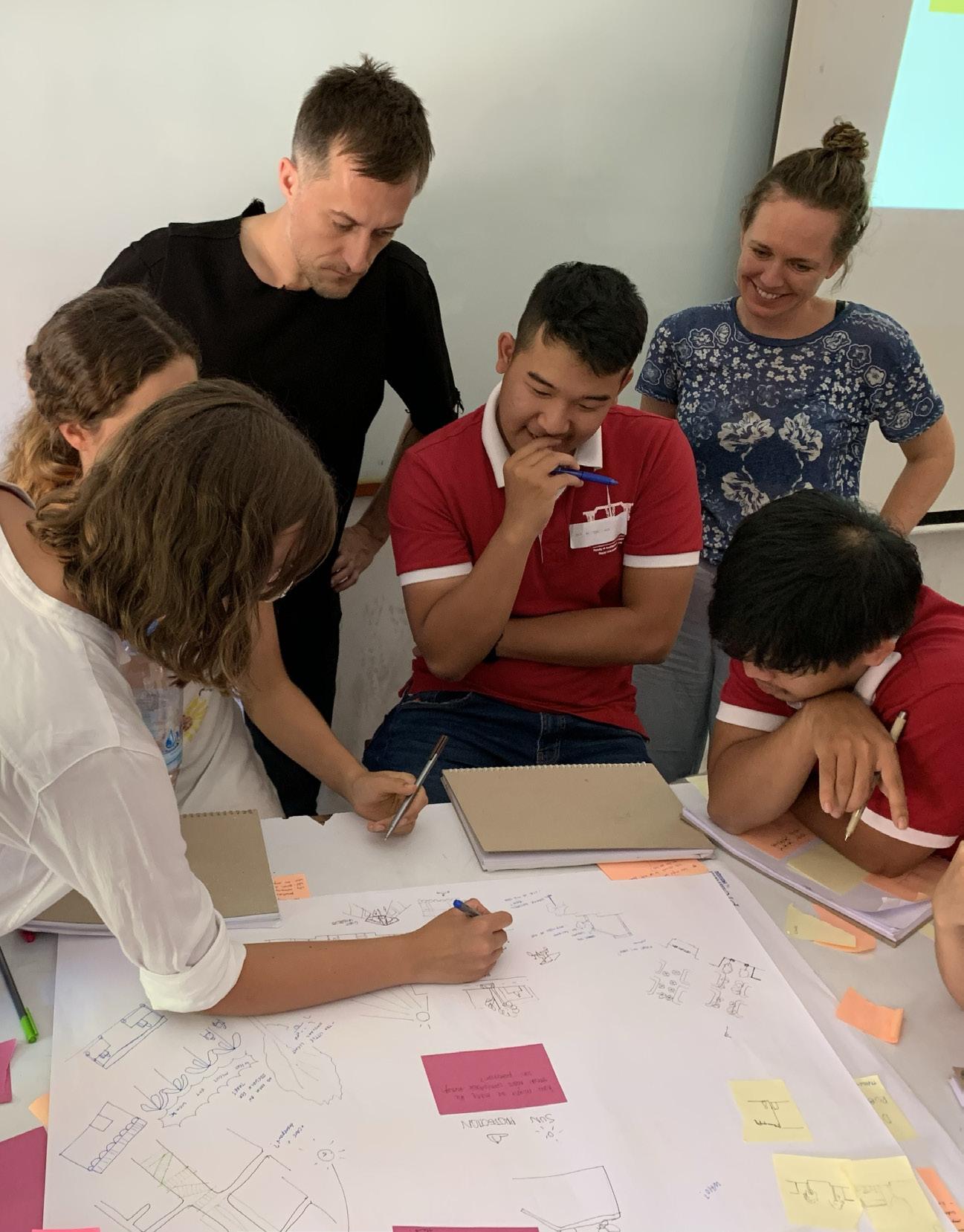
1 minute read
co-create, interdisciplinary + intercultural
Students are prompted to act in ‘joined-up’ ways to better address the types of wicked 21st century challenges of society and nature (Jones and Wingfield, 2010) that they witness first hand in urban streets. Exchanging and synthesising ideas in diverse teams builds collective knowledge and develops skills in deconstructing fixed notions of identity; disciplinary, cultural, behavioural, self and ‘other’. This approach draws on theories of metadesign that Jones and Wingfield (2010) describe as a design process that transcends specialist boundaries and emphasises emergent systems thinking. McCarthur (2018) argues for augmenting this with transcultural pedagogical practice that equips students to operate in interconnected global contexts. Leveraging social identity theory, Hughes (2010) asserts that teams may work more effectively if a sense of group identity is established, and that allowing fluidity in individual identity may allow team members to experience a greater sense of belonging to the group.
Hughes, G. (2010). Identity and belonging in social learning groups: the importance of distinguishing social, operational and knowledge‐related identity congruence. British Educational Research Journal, 36(1), 47-63.
Advertisement
Jones, H., & Wingfield, R. (2010). MetaboliCity: How can metadesign support the cultivation of place in the city?
McArthur, I., Priestman, M., Miller, B., (2018), ‘Collaborative mapping as a new urban design pedagogy’, in McArthur, W., Xu, F., Miller, B., (Eds). ‘Investigating the Visual as a Transformative Pedagogy in the Asia Region’, (p.121-150), Champaign, IL: Common Ground Research Networks.










